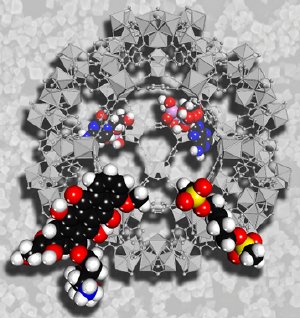Sep 10 2010
The CNRS Gold Medal, France's highest distinction in scientific research, has been awarded this year to chemist Gérard Férey. This prestigious annual prize rewards the works of a prominent personality who has made an exceptional contribution to the dynamism, reputation and influence of French scientific research. Gérard Férey is a researcher in the physicochemistry of solids and inorganic or hybrid materials.
He specializes in the design of hybrid porous materials, in particular for the storage of CO2 or medicines. With the help of his team, he predicts and explains the behavior of these nanomaterials, which have a wide range of useful properties and potential applications in the fields of energy, sustainable development and healthcare. Férey is a member of the Academie des Sciences and professor emeritus at the Université de Versailles Saint-Quentin-en-Yvelines (UVSQ). He served as deputy director of the CNRS Chemical Sciences Department before founding and heading the Institut Lavoisier in Versailles (UVSQ/CNRS).
 Molecules of busulfan (an antileukemic), AZT (anti-HIV), Cidofovir (anti-cytomegalovirus) and Doxorubicin (to treat breast cancer) oriented toward the center of the cage of MIL-101 (in gray), which can hold and transport them. The background of the image shows nanoparticles of MIL-101. © © Gérard Férey
Molecules of busulfan (an antileukemic), AZT (anti-HIV), Cidofovir (anti-cytomegalovirus) and Doxorubicin (to treat breast cancer) oriented toward the center of the cage of MIL-101 (in gray), which can hold and transport them. The background of the image shows nanoparticles of MIL-101. © © Gérard Férey
Combining the disciplines of physics and chemistry, Gérard Férey, a specialist in materials science, has become a pioneer in the rational design of a new class of hybrid porous materials. He knows how to develop and assemble materials that can store hydrogen, trap carbon dioxide, encapsulate medicinal substances, etc. His work at the Institut Lavoisier (UVSQ/CNRS) has led to the development of new compounds with promising applications in a variety of fields, including petrochemistry, energy, catalysis, medicine and environmental protection.
Gérard Férey began his career in Le Mans, first at the Institut Universitaire de Technologie and then at the Université du Maine, where he specialized in the chemistry and physics of inorganic fluorides (fluorine-based minerals). In 1988 he was named deputy director of the CNRS Chemical Sciences Department. Then in 1996 he founded the Institut Lavoisier in Versailles (UVSQ/CNRS) and turned his attention to porous solids. There, he and his team set out to develop compounds made up of inorganic and/or hybrid frameworks and pores (cages, tunnels), with particularly useful absorption properties. By combining controlled chemistry and digital simulation techniques, Férey was able to create and predict the structures of these hybrid porous solid materials, in particular the first crystallized mesoporous solids whose volume is comparable to that of proteins. His global approach, unique in the world, has enabled him to discover more than one hundred new porous topologies, focusing on the existence of large pores.
In 2005, seconded by his team, Férey described one of these crystallized porous solid materials with unprecedented performances. Called MIL-101 (Materials of the Institut Lavoisier n°101), its volume exceeding 700,000 angströms (10-10 meters) is equivalent to that of proteins. With its 3.5nm (3.5 billionths of a meter) pores, one cubic meter of MIL-101 can trap nearly 400 cubic meters of CO2 at 25°C.
In 2007 Férey and his team discovered another previously unknown family of these solids: trivalent metal dicarboxylates capable of increasing their volume by more than 300% under the effect of a solvent—and then returning to their original state! Some of these materials are already being produced industrially, and research is underway to further increase the size of their pores, which will improve their performance in applications such as hydrogen storage, CO2 sequestration at ambient temperature, electrode materials and the delivery of unprecedented quantities of medicines, including antineoplastic (antitumor) drugs.
Gérard Férey has won many prizes for his scientific work, including the first prize (grand prix) of the Fondation de la Maison de la Chimie in 2010 and the ENI Award for environmental protection in 2009. A member of the Academie des Sciences and the Institut Universitaire de France, he is also one of the founders of Ambition Chimie, an association of seven accomplished French chemists united to promote and enhance the discipline's image among the public.